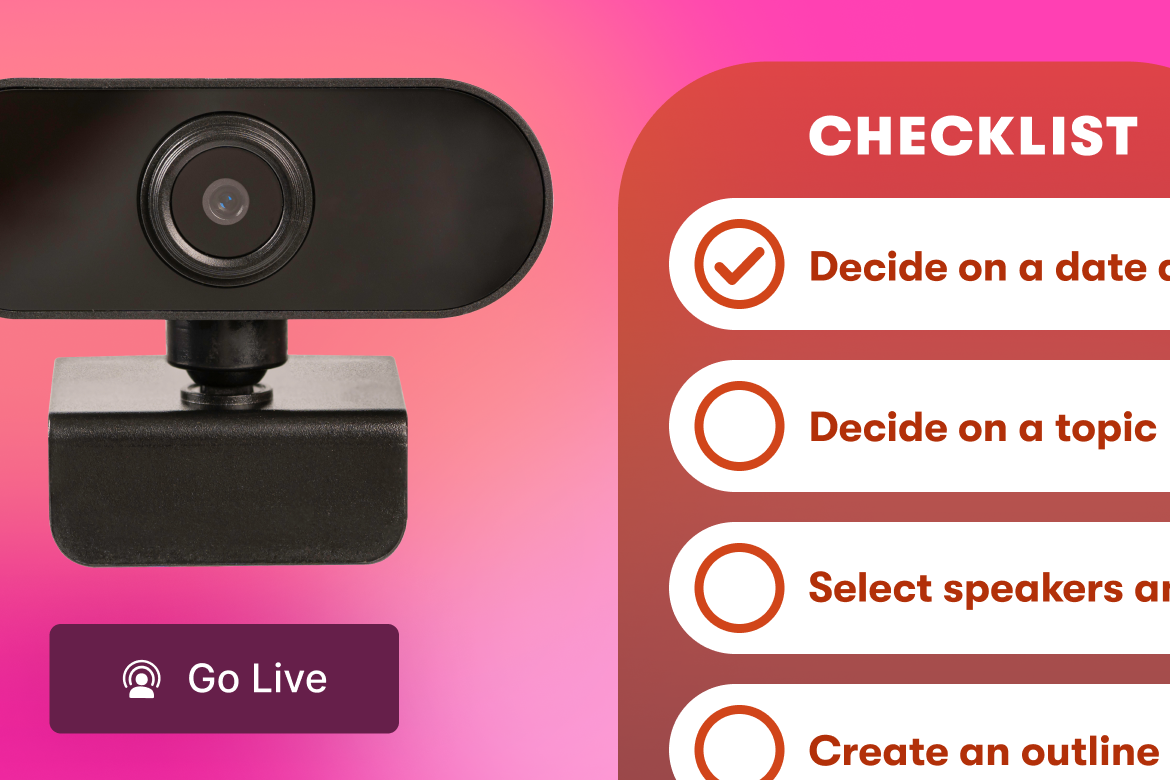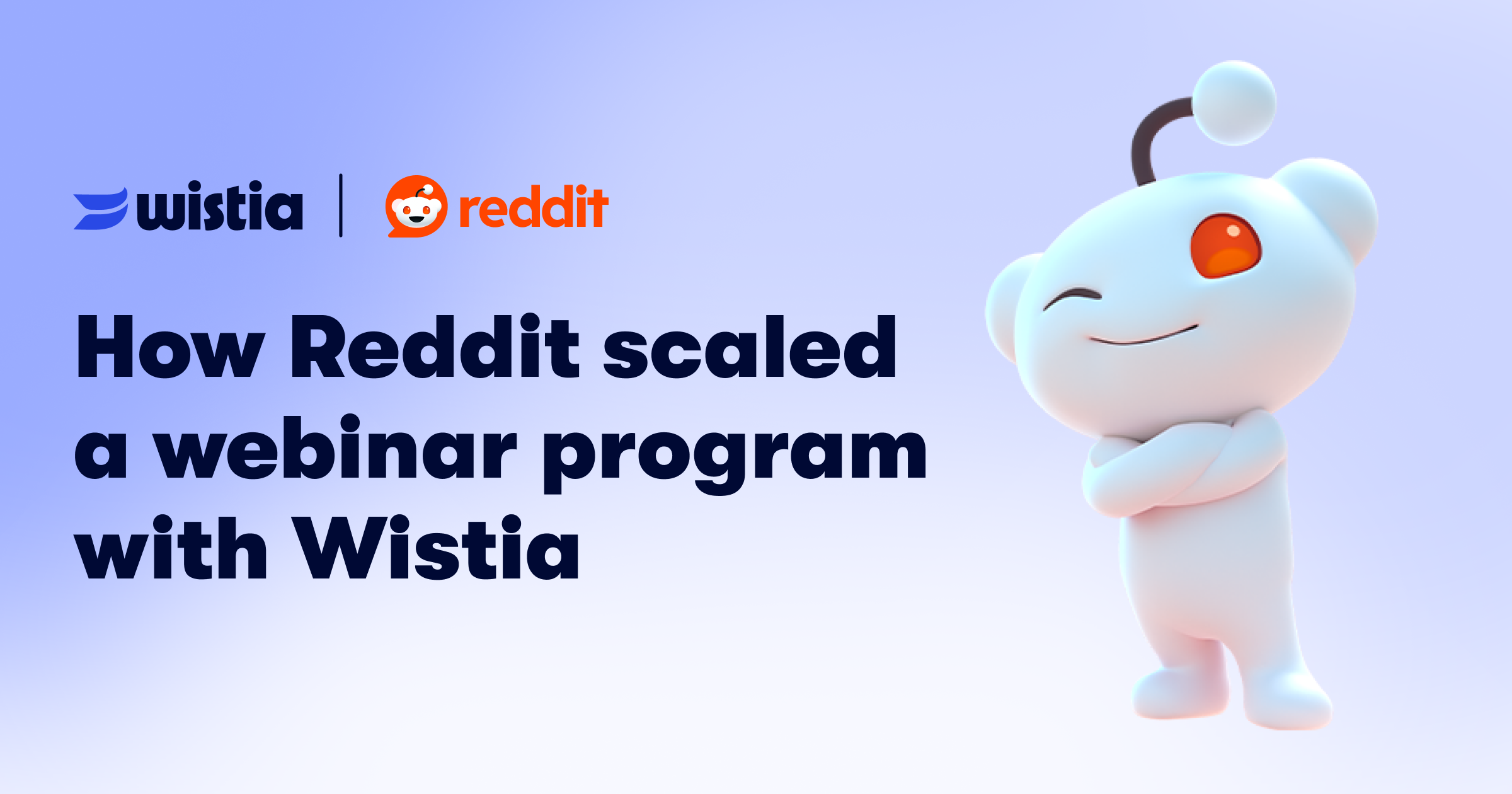4 Ways to Convince Your Boss to Make Episodic Video Content
Learn how to get your boss on board with making an episodic video series to help build your brand affinity.
November 21, 2019
Topic tags
Back in the day (approximately three short years ago), we wrote a little blog post about how to convince your boss that you need video in your marketing mix. Flash-forward to the end of 2019, and the value of video is simply a no-brainer. However, some businesses are still sticking to the same old strategies, and truth be told, the times have changed yet again. In today’s marketing landscape, you can’t depend on e-books, video email signatures, or one-off videos for social media to help you stand out amongst the competition and grow a strong, well-loved brand.
Getting people to genuinely like your brand through traditional marketing strategies and digital advertising is harder than ever, and we need a new way to engage an audience that’ll truly foster an affinity for our businesses. So, what are we getting at here? Well, as you may have noticed lately, we’re going all in on episodic video content (and we think you should too!). Most of us dedicate entire Saturdays to binge-watching series like Stranger Things and The Handmaid’s Tale because the content is just that good. So, why can’t businesses get in on the game?
We’re not saying your company should shell out millions of dollars to create an original series with A-list actors. But luckily, creating an episodic series for your company within the constraints of a marketing budget is not impossible, either. We know a ton of businesses from a wide array of industries are doing that as we speak, and we even did it ourselves at Wistia with our docu-series, One, Ten, One Hundred, and our latest talk show for marketers, Brandwagon. While this may sound like an ambitious venture, an episodic video series is an evergreen piece of content that can generate a ton of different benefits for your brand and your business.
If you’re already completely sold on this idea, that’s great! Now, it’s just time to get your boss on board. In this post, we’ve gathered the evidence you need to support your pitch for making an episodic video series and why it should be your company’s next big marketing move.
1. Show the decreasing effectiveness of traditional strategies
Content strategies
To be seen as a leader and an innovator in your industry, ranking at the top of search queries with traditional content strategies isn’t as easy as it used to be. The sheer density of written content today is overwhelming when you look at the numbers. For example, according to 2018 internet statistics, over four million blog posts are published every single day. When you take a minute to assess that stat, differentiating your brand through written content on the web seems like a shout into the void for many businesses, unless they’ve already established a loyal fan base.
Patrick Campbell, CEO of ProfitWell, a subscription software company, is someone who has dwelled over the decreasing effectiveness of e-books and blog posts for his business. This influenced the company to shift its strategy to creating episodic series for niche audiences, which has become one of their primary marketing vehicles. With his background in data-science, Campbell uncovered that the average cost of creating a written e-book cost more for ProfitWell than their new strategy of creating shows like Pricing Page Teardown. And as a result, Campbell proclaimed that this episodic content strategy is having an incredible impact on the business while building their brand in unprecedented ways.
“Campbell uncovered that the average cost of creating a written e-book cost more for ProfitWell than their new strategy of creating shows like Pricing Page Teardown.”
Advertising strategies
In terms of traditional advertising, we’re no stranger to seeing a campaign we put our hearts and souls (and a couple of million dollars) into not meet our expectations. For a brief overview of what happened a few years back, our co-founders, Chris Savage and Brendan Schwartz, explained at our live-streamed event “Change the Channel” that Wistia spent $2 million on an ad campaign consisting of web ads, billboards, and NPR spots. The campaign got us 43 million impressions. However, it got us no more traffic than one relatively successful blog post.
This was one of the most expensive mistakes we’ve ever made. What was the main problem, you ask? Well, we underestimated the fact that digital advertising doesn’t actually make people like you (regardless of how cute the ad is) and no one wants to be bothered by unsolicited ads. Your chances of building brand affinity with a witty tagline or targeted 10-second video ad won’t convince people to become loyal advocates of your brand.
Furthermore, creating compelling and entertaining video ads powerful enough to garner new brand fans like some of the best Superbowl spots is unattainable for most small and medium-sized businesses. Even a well-known brand like Nike can’t consistently maintain virality or a positive image with their creative campaigns in the minds of consumers. For small and medium-sized businesses out there trying to compete with the caliber of Superbowl ads, it’s time to think about casting your net around niche audiences and getting them to spend more time with your brand. And the best way to do that is through valuable and entertaining episodic content.
2. Show how video series improve time spent with brand
Another strong case for creating a video series is based on the way users choose to consume media. In this binge-watching era, users are embracing the trend of watching video content for several hours straight when it’s worthwhile and engaging.
When you invest in creating long-form content that offers value and entertainment for a niche audience, the increase in time spent with your brand for one engaged individual is significant. There’s no comparison when you think about someone who willingly watched 10 minutes of a single 25-minute episode of your show and someone who was forced to watch a 10-second video ad upwards of seven times on social media. Echoing the last argument we made, people often show disdain toward unsolicited ads on social when they go there to be distracted, entertained, or informed.
Dan Slagen of ThriveHive, a SaaS company providing guided marketing solutions for small businesses, is someone who can attest to episodic series’ positive impact on time spent with a brand. Based on data from analyzing peoples’ viewing habits of their series Locals, which brings you behind the scenes of local businesses, ThriveHive has found that people who make it to the three or five-minute mark of an episode are most likely to watch all the way through. That simply means that when the right people in your audience discover your series, they have the potential to watch a ton of it. Tell that one to your boss!
“ThriveHive has found that people who make it to the three or five-minute mark of an episode are most likely to watch all the way through.”
3. Show how marketing episodic content is scalable
Binge-worthy content is also the most scalable type of product your business can offer your audience. Follow the lead of media companies who’ve developed an effective social media advertising strategy that doesn’t get on people’s nerves. For series like The Good Place, media companies create trailers that are optimized for specific platforms they’re distributed on. When folks are on their favorite platforms and are looking to be entertained, distracted, or to learn about something, these trailers reach people at the right place at the right time. Audiences that find these trailers or snippets entertaining and worth checking out are then directed to the full episode to watch at their leisure.
If your business creates an episodic series, you can scale your marketing assets just like media companies by creating a trailer to tease the release, extracting clips from the actual series to promote it, engaging people with behind-the-scenes footage, and much more. Investing in producing an episodic series is investing in an evergreen piece of content for your business that’ll support your brand indefinitely. And you’ll be able to reuse and re-create marketing assets from your series far into the future.
For example, a year ago we released our four-part docu-series One, Ten, One Hundred and created a bunch of marketing assets to get people excited and interested in watching. One year later, and we re-marketed the series on social and posted behind-the-scenes footage to reach new audiences. As a result, we saw new people access this evergreen piece of content and spread the word to others that it’s worth watching, too.
Even after we’ve stopped promoting the docu-series, we’re still seeing One, Ten, One Hundred bring in about 5,000 new people every month. The original campaign also permanently increased brand search (queries with “wistia” in them) by 11%, which has stayed steady. Lastly, it brings in more than 100 leads per month.
With an episodic series for your business, you’ll be surprised by how many times you can tie it into conversations you have and the marketing assets you need to support your brand long after its release.
4. Show that your competition is already ahead of the game
The final (and arguably most compelling) piece of evidence to show your boss and stakeholders when pitching episodic content is simply the fact that other businesses in your space are already investing in it. Sounds pretty simple, right? The truth is, sometimes you need to just prove that the trend is already well under way in order to get your boss bought in on doing it. Remember, there was once a time where people thought Instagram wasn’t really a social platform for businesses, and clearly over the years that theory has been proven wrong.
Businesses in unexpected industries are experimenting and taking risks with episodic video to build an engaged audience for their brand, so chances are you’ll have some examples to point to in your own industry. But regardless of the space you’re in, your boss is most certainly paying attention to what your competitors are doing, so you should leverage that when making a case for creating an episodic series. The last thing you want for your business from a marketing perspective is to seem outdated and behind the times. Showcasing how other companies and competitors are making this content is a great way to prove that you’re not alone when it comes to believing in this strategy.
We’ve already mentioned two businesses that are completely bought-in on developing shows — ProfitWell and ThriveHive — and they’re definitely not the only ones! One business producing a short-form series is ezCater, the world’s largest online catering marketplace. We chatted with Sarah Gurr, ezCater’s Head of Content Marketing, to get the inside scoop behind their strategy. Their series, Restaurant Roots, features unique stories from their partners such as SA PA and Modern Thai Cuisine in Boston. Instead of taking a conventional approach to written customer testimonials, this engaging episodic video series showcases the heart of each restaurant with narrations from respective founders to establish a deeper connection between ezCater and prospective customers and other restaurant operators.
Another business we believe is leading the way with this audience-building strategy is Mailchimp. Mark DiCristina, the Head of Brand at Mailchimp, described how the marketing automation software platform has decided to invest in creative content over brand advertising. The company has been releasing short-form video series, films, and podcasts out of their own new content studio, Mailchimp Presents. With content that inspires, motivates, and makes people feel like they’re not alone, Mailchimp Presents has developed a valuable platform for an audience of entrepreneurs, while increasing the amount of time people spend with their overarching brand. When DiCristina sat down with Chris Savage on the first episode of Brandwagon, he also shared that “ … the people who engage with this content are paying us more quickly. And when they pay us, they pay us more money, which is just completely mind-blowing.” This fact isn’t mind-blowing because he’s surprised people like the content — it’s because the content isn’t about the Mailchimp product at all.
“The people who engage with this content are paying us [Mailchimp] more quickly. And when they pay us, they pay us more money, which is just completely mind-blowing.”
If you want more examples of companies with episodic video strategies, look no further than our blog. Prove to your boss that other businesses are ahead of the game, and they just might be on-board to take a bigger creative risk for growing your brand.
Present your proof — it’s showtime!
We understand approaching your boss and company stakeholders with an idea to create an episodic video series might sound absurd, but hey, it’s almost 2020 — anything can happen! All jokes aside, the future of marketing has shifted and brands need a new way to stand out amongst the competition. It’s time to convince everyone that episodic video content will help you cut through the noise and build better brand affinity in the long-run.






